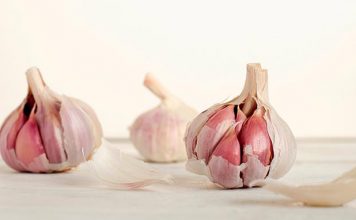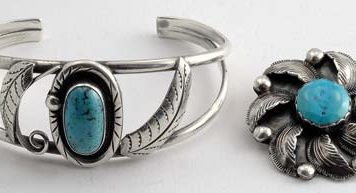| By Darlene Campbell | |
| Issue #67 • January/February, 2001 |
Decades ago it was advised of young high school graduates to deposit a set amount of money into the bank each month, and when they retired they would be millionaires. Unfortunately, that philosophy fell by the wayside after World War II. Today it is not unusual for young graduates to receive credit card applications by mail starting them on the road to indebtedness, not the road to wealth.
If you are in debt now, you should be working to clear all indebtedness during the next year. We did it, and you can, too. We paid off credit card debt and doctor bills. We paid off the car and made double payments on the mortgage principle of our home with the intent of paying that off, too. But as the future began to look uncertain, we changed plans and sold our mortgaged home and obtained enough money from the equity to pay cash for a smaller home. Both my husband and I have even quit our jobs since having no debt means we need less income. We are not old enough for retirement and do not collect disability, retirement income, or welfare. Instead we have simply freed ourselves of debt and can now pursue other interests and earn sufficient money doing practically nothing.
We have enough money to eat, pay utilities, and put gas in two vehicles. I freeze a lot of food, and what we do not grow we purchase on sale. Most of our income comes from selling at flea markets and over the Internet.
Knowing how much you owe and how much you earn is not going to get you out of debt. You must learn to do with less, stop buying on credit, downsize what you already own, and eventually you will be debt free. Sounds easy enough, but most people find this is the most difficult part of getting out of debt. They don’t want to stop spending. Most people struggle to have more, not less.
Where do you spend?
It is necessary to organize your financial records, then develop a plan for paying off creditors. Gather the following records: your most recent pay stub, most recent bank statement, your checkbook, and all current credit card bills, medical bills, utility bills, insurance premiums, children’s allowance, pet care, installment loans, newspaper subscription, cable TV, transportation, etc.
|
With these items in front of you, enter your income on the top line of a sheet of paper. This is your worksheet. List every known monthly expense, from the kids’ allowance to the mortgage payment, and add it up with a calculator. When you finish you will see how much you earn and where the bulk of your money is spent. On the same worksheet, list out-of-pocket or miscellaneous expenses—all those little expenses down to the smallest item such as a coffee break, hamburger, purchase of a key ring, or cigarette lighter. Pay close attention to these small expenditures because they add up to a significant sum on a monthly basis, and are almost always wasteful.
If you spend a lot unnecessarily, or are an impulse buyer, you probably can’t come up with a figure for miscellaneous out-of-pocket expenses. In order to find out what you are spending unnecessarily, begin a journal of where your pocket money goes. When you have to take time to record each purchase, you will become less impulsive. Carry a small, inexpensive pocket notebook and list your spending as it occurs so you won’t forget. If you are shopping at a mall and stop for lunch, enter everything you purchased while you are eating, including your meal. If you buy a magazine, make the entry in your journal when you get back into your car. Another way to keep track of such expenditures is to save the cash register receipts and enter them all into the journal at the end of the day. Maintain this journal for one week, then multiply the sum total by four to find the amount spent in one month. If you doubt this total, continue the journal for the entire month. Enter this amount on the sheet of paper with your other expenses. Call this your out-of-pocket or miscellaneous expenses.
Categorize your monthly expenses by listing similar expenses in the same category on the worksheet. You may want to list monthly living expenses such as mortgage or rent, utilities, and gasoline separate from irregular expenses incurred on an annual or semiannual basis like insurance, taxes, and auto licenses. There are flexible expenses that are necessary but can be reduced, like food and clothing, over the counter drugs, toiletries, and out of pocket expense. Finally, there are questionable expenses that are wasteful and can be easily eliminated.
Now you can work on eliminating those expenses that are unnecessary. Can you reduce the number of trips to the hairdresser? I have cut my husband’s hair for the last 35 years, and we save a bundle.
No more credit card
If you are charging $100 a month on credit cards, you must cut back at least $100 a month. By cutting back $100 a month you can quit using your credit card which is the beginning of paying it off. Take time to read your monthly credit card statement; it can be very enlightening. What interest do you pay? How is it figured? Is it two cycle billing? Most major department stores charge in the range of 20-21% interest, while bank credit cards charge from 5-9% as an attractive come-on, then raise the rate in six months to around 17%.
To be credit card free, take the total you owe on credit cards and divide it by the number of months in which you wish to be debt free. The answer is the amount of cash you must pay every month, plus a little more to cover interest, to free yourself of that debt within the desired time. Paying on several cards each month means you are paying interest to multiple creditors. If a new credit card offers a low interest rate to entice you to pay off your other cards, take advantage of it, but plan to pay off this new card at the introductory low interest rate before the new, higher rate comes into effect.
Pay the most you can possibly afford and think how you are paying so much a month for goods or services that you purchased a year ago and may no longer use. If you had the extra cash each month you would feel so free. You must be strict with yourself and make the commitment to pay off the debt within a specified time. It means you will now buy less, make do, and recycle everything possible to come up with the monthly payment. Your reward is watching the balance drop rapidly.
But this only works if you stop using the card! The best way to do this is to put it in a safe place where you are not tempted to use it. Do not carry a credit card on your person. After you pay off the card, notify your creditor that you are destroying the card and want to cancel your account. This way you will not be subject to annual fees later, or tempted into using it.
When you have consolidated all your credit card debt into one card with a lower interest rate, you will probably wonder how you are going to meet such a large payment each month until it is paid off. It scared me, too. We consolidated our two cards into one four-digit debt. With only six months before the low introductory rate changed to a much higher rate, we divided the six into the total and came up with $350 a month. Our payment was high, but we persevered until it was paid off.
Found money
Finding $350 a month was rough. It’s more than some people pay in mortgage payments. We made the payment every month and cut expenses everywhere else by pulling in our belts for a few months. I relied heavily on “found money,” small amounts of money that I managed to save or set aside.
Begin saving all your loose change. John taught me this years ago by doing it diligently himself from the beginning of our marriage. I never did it until we had to have the extra $350 a month. I put pennies in a tall bottle, nickels and dimes in a cream pitcher, and quarters in a face cream jar hidden out of sight. I discovered the bottle holds over $10 in pennies, the face cream jar holds $20 in quarters, and the cream pitcher holds $30 in nickels and dimes. Get yourself some free coin rolls at the local bank. Put the paper rolls in a security box, and once every two or three months roll all your coins, or as many as you need to free space in the containers, and place the rolled coins in the security box.
You must work to make your found money grow, so every time you come home from shopping, separate the coins. When you pay for an item, use only bills to make sure you are given change in return which you can save. If you feel a little rich, buy some coins; ask the cashier to give you a dollar or two in quarters. You will be amazed at how you never miss this change, yet it seems to grow by the month. If you are diligent, you should be able to save several hundred dollars a year in this manner, which you keep in the security box for emergencies or deposit in a special account.
You can gain found money in your checking account by rounding up the checks you write to the nearest dollar in the check register. You don’t want to lose track of the actual amount of the check so write this amount in parenthesis next to it. This not only makes your check book easy to figure, it always leaves a little extra in reserve.
Another method of having found money in the checking account is to draw a line across the page after you balance your account. The next deposit becomes the new balance and checks are written only on that balance. If there is a balance in the account at the end of the month, that too gets a line drawn under it to signify that you are beginning a new cycle and will write checks only on the next deposit. Each month leaves a little more in reserve; it might be only 89 cents, or it might be $12.89. This amount becomes hidden and is seen only when the monthly bank statement arrives. Check your statement balance against your cycle balance and the difference is found money in your account. It will add up to a considerable sum if untouched. It will also help prevent you from overdrawing, which can be very costly.
Found money also includes the coupons you clip from newspapers and use as cash at the supermarket. Get them organized and use them. Some stores will double the face value of the coupon up to a certain amount, so if you happen to find the item on sale and use a coupon to purchase it, you may get the item free.
It’s a good idea to get your family around the table and talk about cutting expenses. Each family member will be affected differently by financial downsizing. Younger children won’t understand, so it’s best to explain to them in simple terms to prevent any anxieties. Older children may act reluctant as they are worried about what their peers will say. Ask their advice along the way and make suggestions for their help like taking on a part-time job after school. This could free up some allowance money. Most older children want to take responsibility for their own spending, so you may inform them that the money they earn should be used wisely such as paying for their school lunches, their clothes and activities. They will appreciate being treated as an adult in this matter.
Establish some goals
As you list your expenses on the worksheet, set up a column with a date you expect to pay off each debt. You should have short-term and long-term goals. Short-term goals could be paying off doctor bills, credit cards, and loans. Long-term could be paying off the automobile and the mortgage. Your short-term goals tell you which creditors will be paid off quickly. A good way to establish priorities among your creditors is to use the balance due each one as your guide. Make the smallest bill your main priority, and the largest bill your last priority. By this I mean to pay off the smallest debt first so that once it is paid off in its entirety you can apply the amount you would normally pay to it to the next priority on your list.
If your worksheet shows that you are spending more than you are receiving in income and there are a lot of creditors bothering you, don’t be alarmed. Simply pick up the telephone and call those creditors and explain that you are working out a financial plan and will be making regular payments until each bill is paid in full. Creditors are very easy to work with if you let them know that you are making an effort to pay them. Take, for example, doctor bills; if you talk to the bookkeeper or the person responsible for sending out the statements each month that you can afford only $10 a month on a $700 bill, it usually will be accepted. By law you cannot be taken to court if you are making an honest effort to pay the account, and make regular payments. Once you get some of the bills paid off you can increase your monthly payment to the doctor from $10 to $20, $40, or more.
|
Keep the worksheet where you can refer to it often. Keep a copy of it wherever you sit to pay the bills. As you pay off a creditor in full, mark it on your worksheet. Now apply the amount you were paying to that creditor to the next priority on your worksheet. Just because you have a set amount due each month on a particular bill does not limit the amount you can pay on it. Once one bill is paid off in full, you will have that extra monthly cash to apply on other bills. Apply all of it to one bill to pay that debt faster; do not spread it around on all the bills. When the second debt is paid off, you now apply the combined amount of the previous two bills to the third bill, plus the normal payment to eliminate it quickly. If you have a date marked on the worksheet for paying off each creditor, you may find as you progress that you can beat those deadlines as you apply the additional cash to each one of them.
You should have a place where you can work undisturbed while figuring and paying bills each month. If you have a desk with a drawer that can be used for the purpose, very good, but if you only have the dining room table then get a cardboard box to set up a file system for maintaining records of each bill you pay, for saving pay check stubs, bank statements, income tax records.
While you struggle to pay off your debt and to live with less, consider ways to eliminate spending so you can live within your means. If you are accustomed to buying yourself and your children soft drinks every time you go to town, and each drink is in the neighborhood of a dollar, you can save those dollars by waiting until you get home and serving powdered drink mixes or canned juice. Buy packages of generic soft drinks and serve them chilled at home or make iced tea using loose tea leaves.
I take along a large thermos of lemonade when we take a trip to town. Often I sit with the children in the car at a shopping mall parking lot and eat sandwiches and cookies. Stopping for a hamburger is not on the agenda, and if we do stop for hamburgers at McDonalds it is for a special treat such as a birthday celebration. Consider taking along an ice chest packed with your meal, which will double as a container to carry home your perishable purchases which includes not only groceries, but animal vaccines that lose potency if not kept cool. Freeze bottles of water to keep it cold, or recycle those ice packs that are packed with vaccines when you order by mail. Trips to the city are still all day adventures walking the malls and looking into store windows (window shopping is free).
Special accounts
Who ever said a person should have only one checking or savings account? If you are like me, this does not manage your money efficiently enough to have a sum set aside for land taxes, auto insurance, fill the propane tank, eye glasses, or school clothes. We always mean to set money aside, but somehow it gets spent, and when the time comes to pay for those expected needs, we just don’t have the money unless we struggle and juggle the budget. What to do? Open a special account.
Special accounts can be either checking or savings. Locate an account that is free. That means free checks with no monthly service charge, or a savings account that does not charge a penalty for withdrawal or low balance. Some banks even pay interest on checking accounts these days, so shop around and ask questions. Make a few calls; you don’t have to open the special account at your present bank.
Make regular deposits into this account, and never, never draw money out or write a check against the account unless it is for that special need. For example, suppose your land tax is $400 a year and you have opened the account to save for that need. Divide that amount by 12 months and you get $33.33. If you deposit $34 monthly into the special account, you never have to worry about where the money is coming from to pay your land tax.
You may not have an extra $34 while trying to pay off your other debts. What do you do in that case? Discover some source of income that can be regularly deposited into the special account. Deposit the egg money, the income tax return, money made from baby-sitting, your saved change, money from the sale of livestock, hay, etc. Raise something special like rabbits. If the income is directed toward the special account, you will find that $400 a year is easy to save, and you may even end up with closer to $600, so that you can purchase something special or needful like a set of tires for the truck.
Do not underestimate a special account. It is the modern version of Grandma’s sugar bowl savings, but less easily dipped into or spent unwisely since it requires a banking transaction.
The final leap. You’ve made it; you’ve finally paid off all your debts and now have freed up your cash. Where do you go from here. It’s time to look at the long-term goals. Mortgages can be paid off rapidly if you pay an additional $100 or $200 a month on the principle. Be sure to note on your payment that it is to be credited toward the principle, or it may go into your escrow account. When we began making large principle payments we learned that an additional $100 a month would shave off 120 months from the payoff date, and save us $21,436 in interest. It was at this point that we made the decision not to pay off our mortgaged house, but to sell it and pay cash for a smaller one with the equity.
Whatever you do, don’t get trapped into debt again. We got out from under those bills and you can too.
















